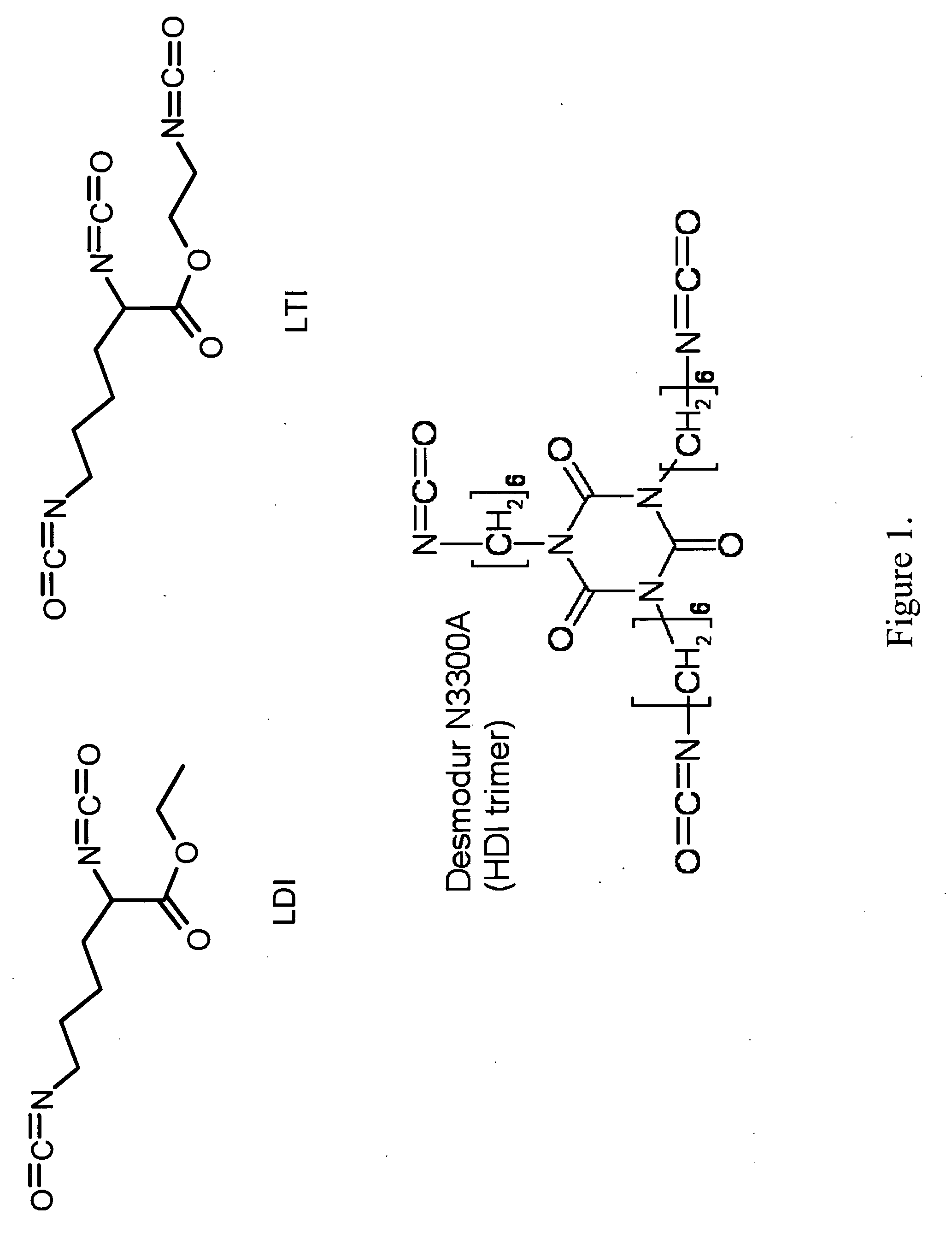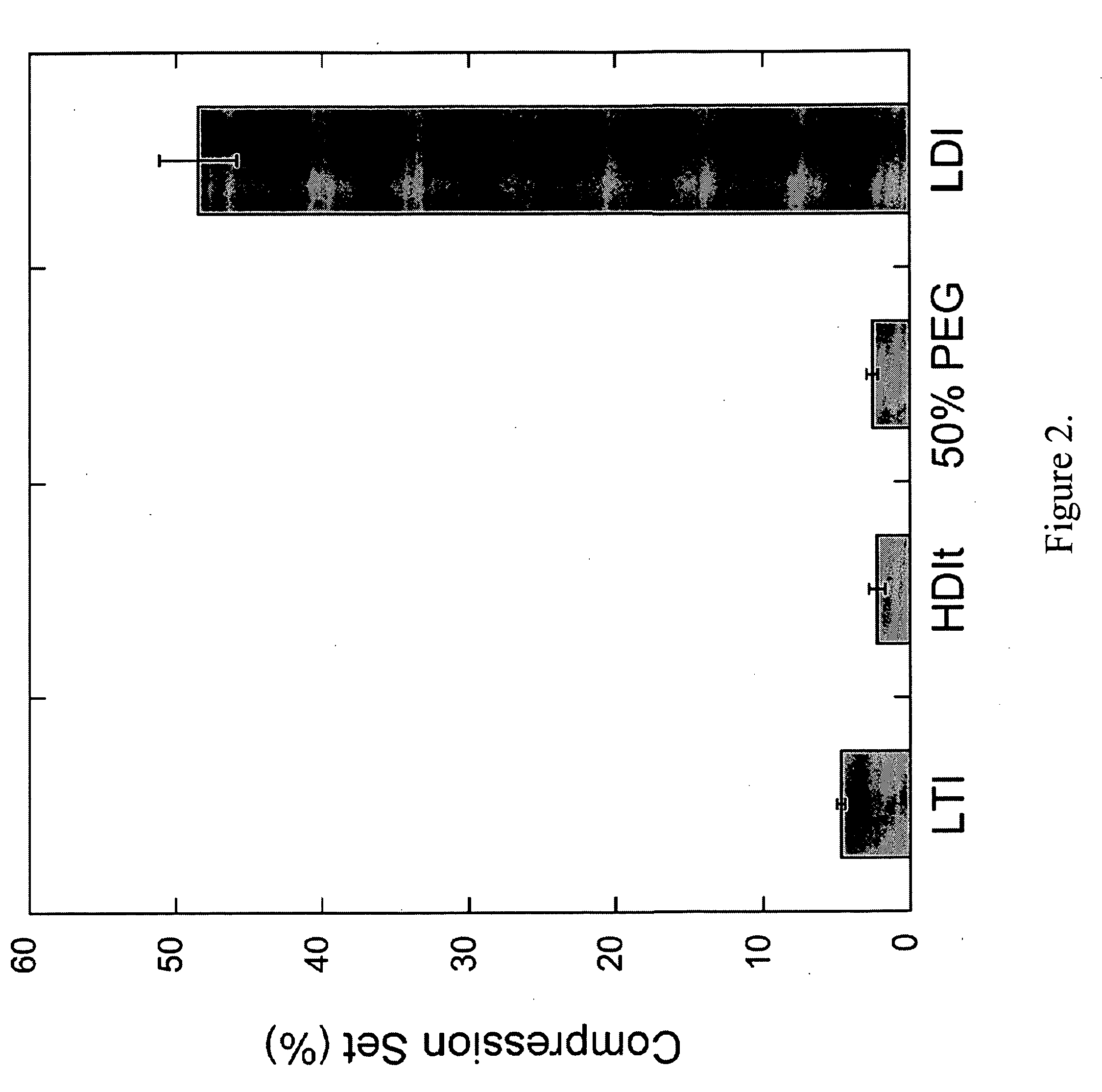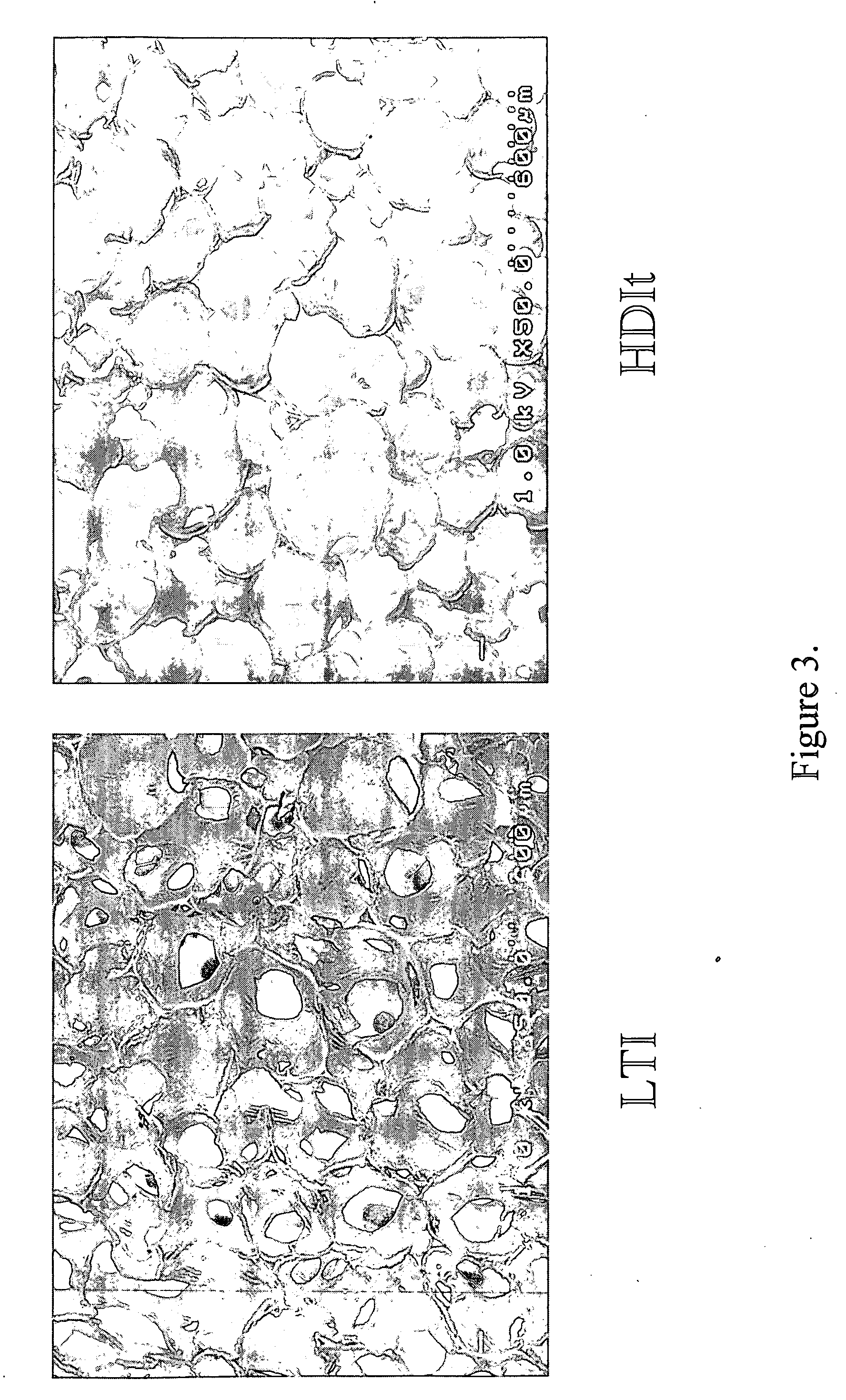Poly (ester urethane) urea foams with enhanced mechanical and biological properties
a technology of urea foam and mechanical properties, which is applied in the direction of antibody medical ingredients, prosthesis, peptide/protein ingredients, etc., can solve the problems of hydrogels lacking the robust mechanical properties of thermoplastic polymers, donors' site morbidity, and hydrogels lacking thermoplastic biomaterial robustness, etc., to prevent shrinkage of foam, high porosity, and high open-pore content
- Summary
- Abstract
- Description
- Claims
- Application Information
AI Technical Summary
Benefits of technology
Problems solved by technology
Method used
Image
Examples
example 1
[0097]This Example demonstrates an aspect of the present invention, and more specifically a method of making a PUR scaffold of the present invention.
[0098]Glycolide and D,L-lactide were obtained from Polysciences (Warrington, Pa.), tertiary amine catalyst (TEGOAMIN33) from Goldschmidt (Hopewell, Va.), polyethylene glycol (PEG, MW 600 Da) from Alfa Aesar (Ward Hill, Mass.), and glucose from Acros Organics (Morris Plains, N.J.). Lysine triisocyanate (LTI) from Kyowa Hakko USA (New York), and hexamethylene diisocyanate trimer (HDIt, Desmodur N3300A) from Bayer Material Science (Pittsburgh, Pa.). PDGF-BB was a gift from Amgen (Thousand Oaks, Calif.). Sodium iodide (Na125I) for radiolabeling was purchased from New England Nuclear (part of Perkin Elmer, Waltham, Mass.). Reagents for cell culture from HyClone (Logan, Utah). All other reagents were from Sigma-Aldrich (St. Louis, Mo.). Prior to use, glycerol and PEG were dried at 10 mm Hg for 3 hours at 80° C., and ε-caprolactone was dried o...
example 2
[0105]This Example demonstrates thermal profile embodiments of the present invention. Thermal transitions of the materials were evaluated by differential scanning calorimetry (DSC) using a Thermal Analysis Q1000 Differential Scanning Calorimeter. 10-mg samples underwent two cycles of cooling (20° C. / min) and heating (10° C. / min), between −80° C. and 100° C.
[0106]DSC thermal profiles of the materials demonstrated single second-order glass transitions. The glass transition temperatures (Table 1, below), extrapolated from the steepest point of the heat flow (mW / mg) vs. temperature (° C.) curve during the second heating cycle, ranged from −30.7° C. (HDIt+50% PEG) to 6.4° C. (900 / LTI). The glass transition temperature of the pure polyols, −41.7° C. (900-Da) and −44.7° C. (1800-Da), were significantly lower than those of the PUR networks. The substantial increase in the glass transition temperatures of the PUR networks relative to those of the pure polyols suggests that microphase-mixing ...
example 3
[0107]This Example demonstrates mechanical properties of embodiments of the present invention.
[0108]Dynamic mechanical properties were measured using the DMA in compression and tension modes. Cylindrical 7×6 mm samples were compressed along the axis of foam rise. The temperature-dependent storage modulus and glass transition temperature (Tg) of each material was evaluated with a temperature sweep of −80° C. to 100° C., at a compression frequency of 1 Hz, 20-μm amplitude, 0.3-% strain, and 0.2-N static force. The relaxation modulus was evaluated as a function of time with stress relaxation under 2-% strain and 0.2-N static force. The frequency-dependent storage modulus was also evaluated with a 0.1 to 10 Hz frequency sweep at a constant temperature of 37° C., with 0.3-% strain and 0.2-N static force. Stress-strain curves were generated by controlled-force compression of the cylindrical foam cores at 37° C. With an initial force of 0.1 N, each sample was deformed at 0.1 N / min until it...
PUM
| Property | Measurement | Unit |
|---|---|---|
| porosity | aaaaa | aaaaa |
| density | aaaaa | aaaaa |
| density | aaaaa | aaaaa |
Abstract
Description
Claims
Application Information
 Login to View More
Login to View More - R&D
- Intellectual Property
- Life Sciences
- Materials
- Tech Scout
- Unparalleled Data Quality
- Higher Quality Content
- 60% Fewer Hallucinations
Browse by: Latest US Patents, China's latest patents, Technical Efficacy Thesaurus, Application Domain, Technology Topic, Popular Technical Reports.
© 2025 PatSnap. All rights reserved.Legal|Privacy policy|Modern Slavery Act Transparency Statement|Sitemap|About US| Contact US: help@patsnap.com



